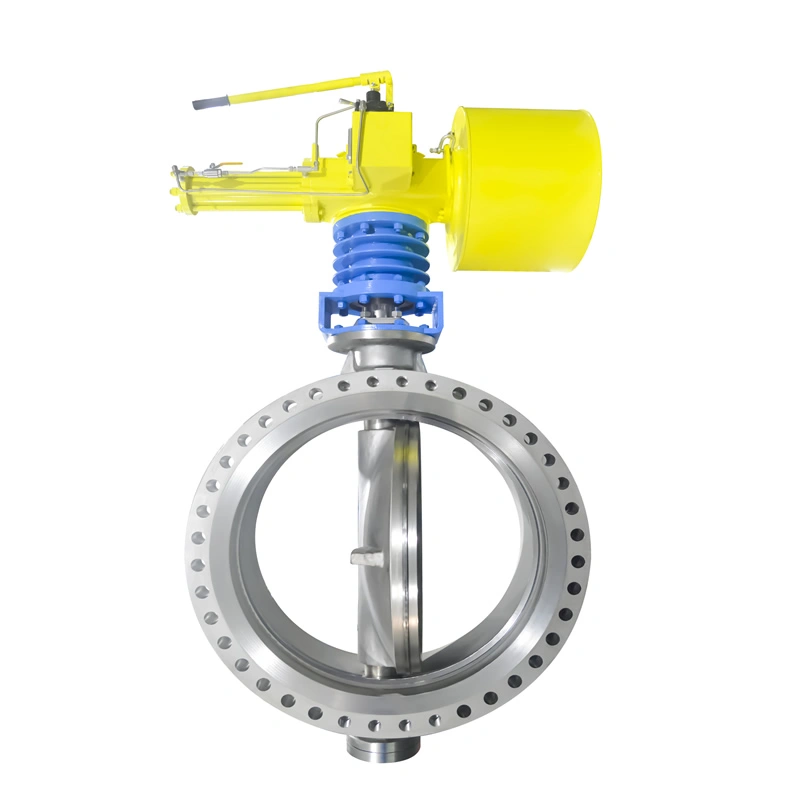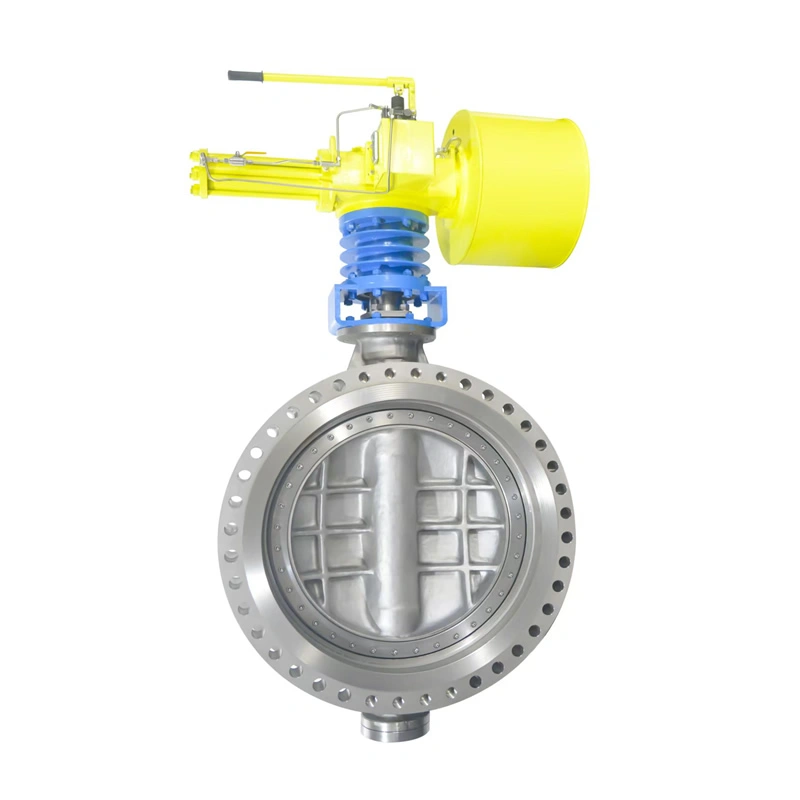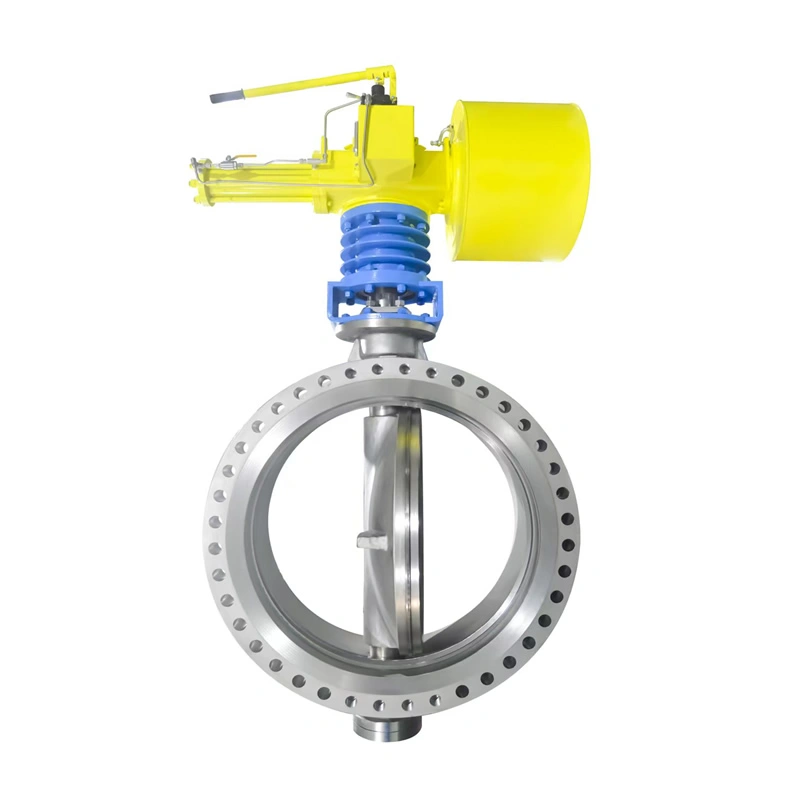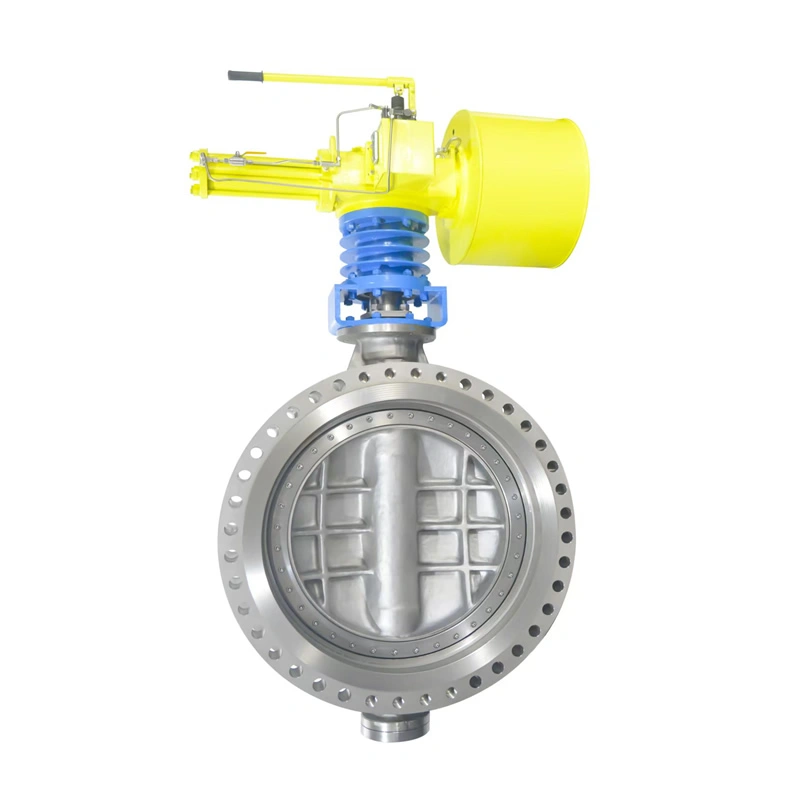- 40 inches (DN1000)
- Manual lever/gearbox (compatible with electric/hydraulic)
- -20℃~1200℃ (varies by material)
- API 609, ASME B16.34, API 598
- CF8c, 310s, 316, 304
- Flanged (ANSI B16.5)
Specification
Newway DN100 300LB High-Temp Metal-Seated Butterfly Valve
I. Product Overview
Newway 40-inch, 300LB high-temperature metal-seated butterfly valve is engineered for extreme thermal and pressure conditions in industrial pipelines. Featuring a robust metal-to-metal sealing design, it leverages premium materials like CF8c, 310s, 316, and 304 stainless steel to ensure reliability with high-temperature media. Designed to regulate and isolate flows of steam, hot gases, and thermal fluids, this valve integrates a durable disc, reinforced stem, and precision-engineered body to withstand prolonged exposure to elevated temperatures (up to 1200°C) and Class 300 pressure ratings. Ideal for power generation, petrochemical, and metallurgical processes, it balances tight shutoff, thermal stability, and long-term performance in harsh environments.
II. Key Attribute Parameters
Nominal Size: 40 inches (DN1000), catering to large-diameter industrial pipeline systems requiring high flow capacity.
Pressure Rating: Class 300 (5.0MPa), validated for medium-to-high-pressure applications, ensuring structural integrity under thermal and mechanical stress.
Body Materials:
Primary Options: CF8c (stainless steel for moderate corrosion resistance), 310s (high-temperature alloy, oxidation-resistant up to 1200°C), 316 (enhanced corrosion resistance for acidic media), 304 (general-purpose stainless steel for lower-temperature, non-corrosive environments).
Mechanical Properties: Tensile strength ≥515MPa (304/316), ≥550MPa (310s/CF8c); yield strength ≥205MPa (304/316), ≥215MPa (310s/CF8c).
Operating Conditions:
Temperature Range: -20°C to 1200°C (varies by material; 310s optimizes high-temperature performance).
Sealing Class: ANSI/FCI 70-2 Class IV (metal-seated), achieving bubble-tight shutoff with minimal leakage (≤0.1% of rated flow).
Actuation Torque: 8000-12000 N·m (manual lever/gearbox; compatible with electric/hydraulic actuators for automation).
Connections & Standards:
End Connections: Flanged per ANSI B16.5, with bolt patterns and dimensions matching large-diameter pipeline specifications.
Design Standards: API 609, ASME B16.34, ensuring compliance with global industrial valve norms.
Testing Protocols: API 598 (hydrostatic shell/seat tests), ASME B16.10 (face-to-face dimensions), validated for leakage, pressure, and structural integrity.
Product Overview
III. Structural Features
Metal-to-Metal Sealing: The disc and seat feature precision-machined, lapped surfaces (Ra ≤0.8μm) for tight contact. A bi-directional sealing design ensures bubble-tight shutoff in both flow directions, critical for high-temperature applications where thermal expansion could compromise soft-seated valves.
High-Temp Disc & Stem: The disc (310s/CF8c) and stem (17-4 PH stainless steel, heat-treated to 35-40 HRC) resist warping and deformation under extreme heat. The stem’s anti-blowout design (API 600-compliant) prevents dislodgement during pressure surges.
Thermal Compensation: A flexible graphite packing system and expansion bellows (blue component in the image) absorb axial/radial thermal expansion, maintaining stem seal integrity and reducing friction—key for valves cycling between ambient and high temperatures.
Lever-Gear Actuation: The yellow lever-gear assembly provides mechanical advantage, reducing manual operation force by 40% for large-diameter (40-inch) valves. The gearbox housing (cast aluminum) offers IP66 protection against dust and water ingress.
IV. Manufacturing Processes
Material Selection & Heat Treatment:
310s/CF8c components undergo solution annealing (1050-1100°C for 30 minutes) to enhance grain structure and thermal stability.
304/316 parts are passivated to boost corrosion resistance, ensuring longevity in chemically aggressive media.
Precision Machining:
The valve body and disc are CNC-machined from solid forgings, with flow paths optimized via computational fluid dynamics (CFD) to minimize pressure drop (≤10% of inlet pressure at full flow).
Sealing surfaces are lapped to Ra ≤0.8μm, ensuring uniform contact and leak-free operation.
Assembly & Testing:
The stem-disc connection is laser-welded (penetration depth ≥2mm) to prevent loosening under thermal cycling.
Hydrostatic tests: Shell tested at 1.5×Class 300 (7.5MPa) for 60 minutes; seat tested at 1.1×Class 300 (5.5MPa) with zero visible leakage.
High-temperature validation: Cycled from ambient to 1200°C (310s model) 50 times, with post-test leakage remaining within Class IV limits.
Surface Finishing:
Bodies and discs are sandblasted (Sa 2.5) to remove scale, then coated with high-temp ceramic paint (dry film thickness ≥150μm) for added oxidation resistance in 1000°C+ environments.




